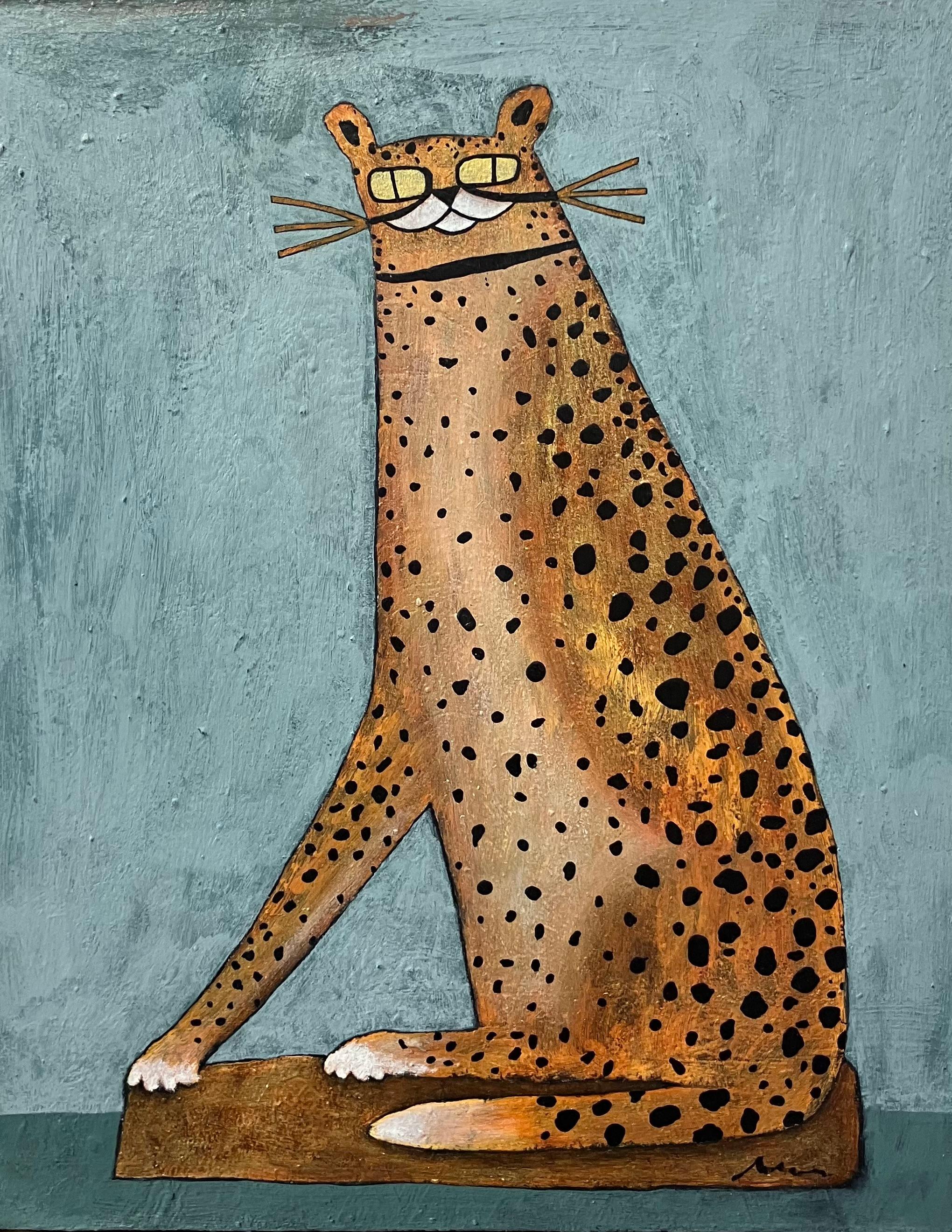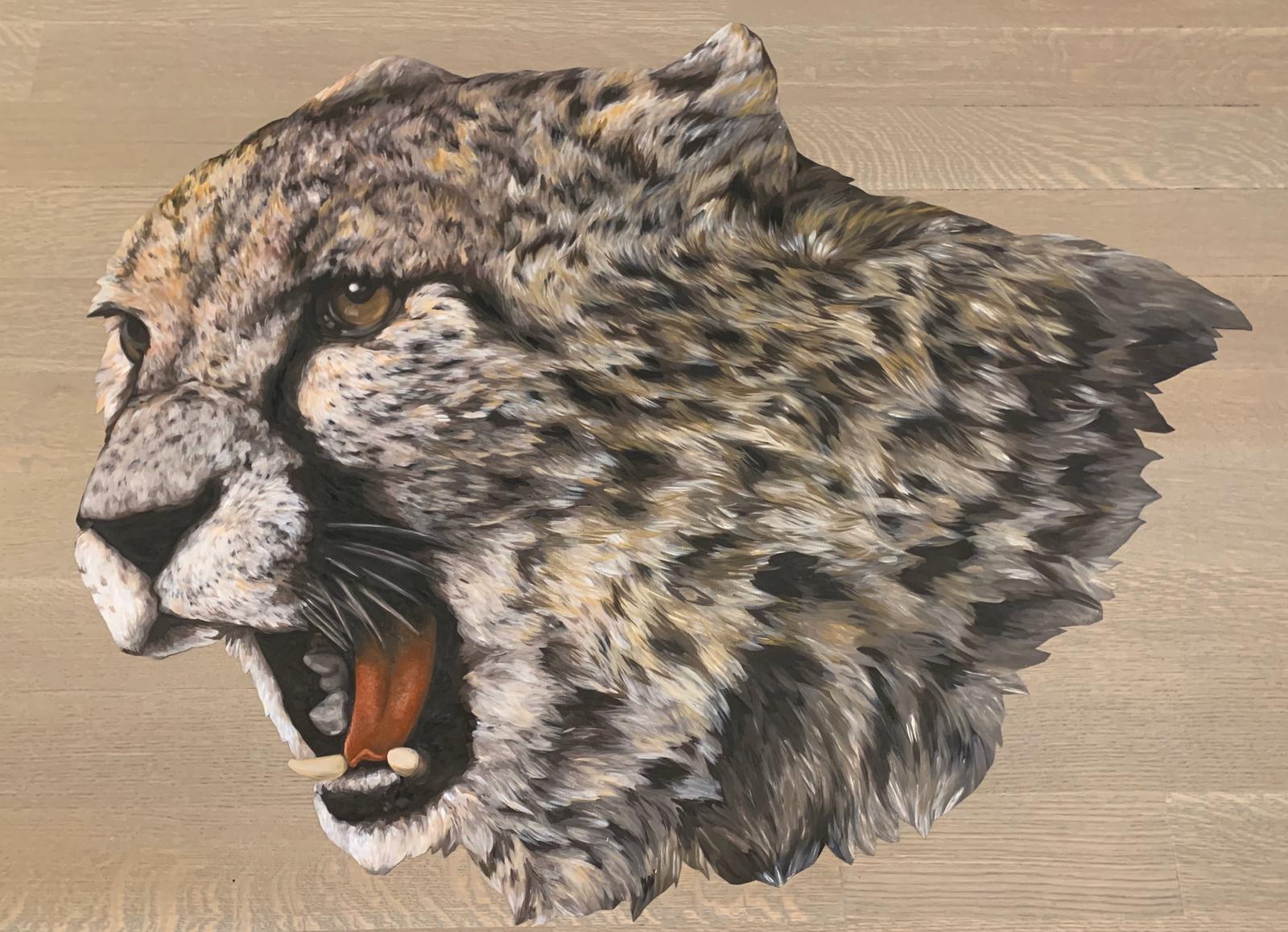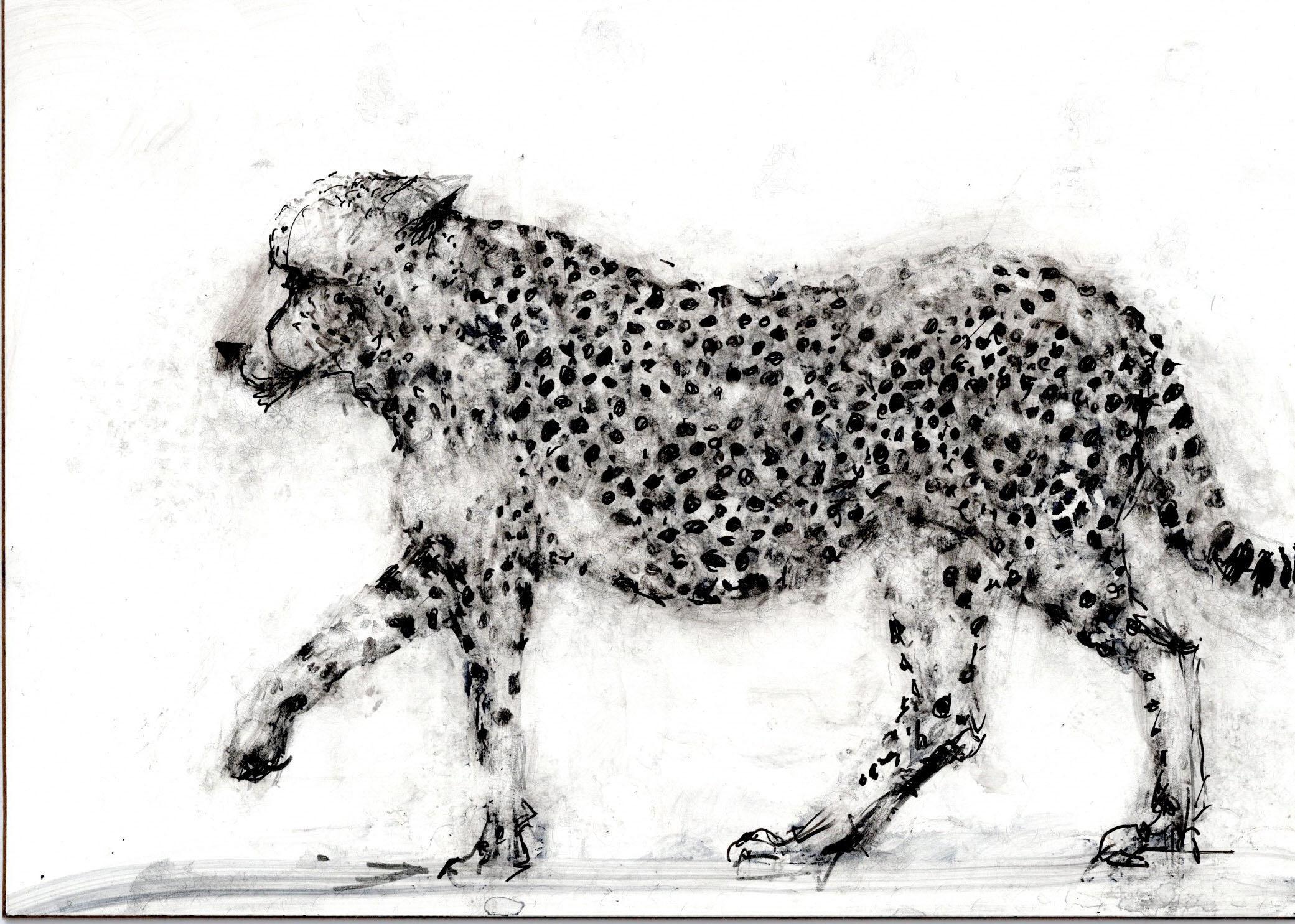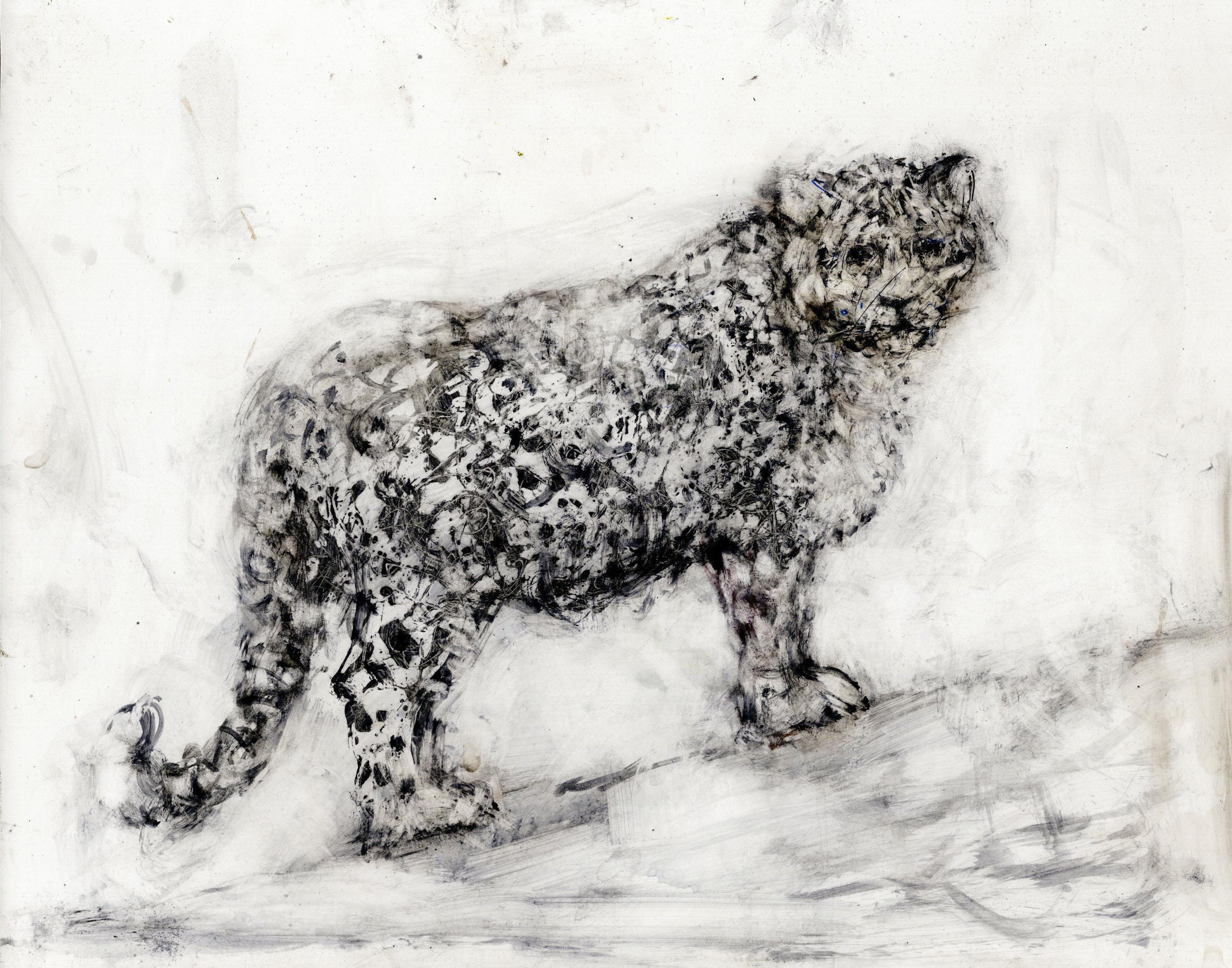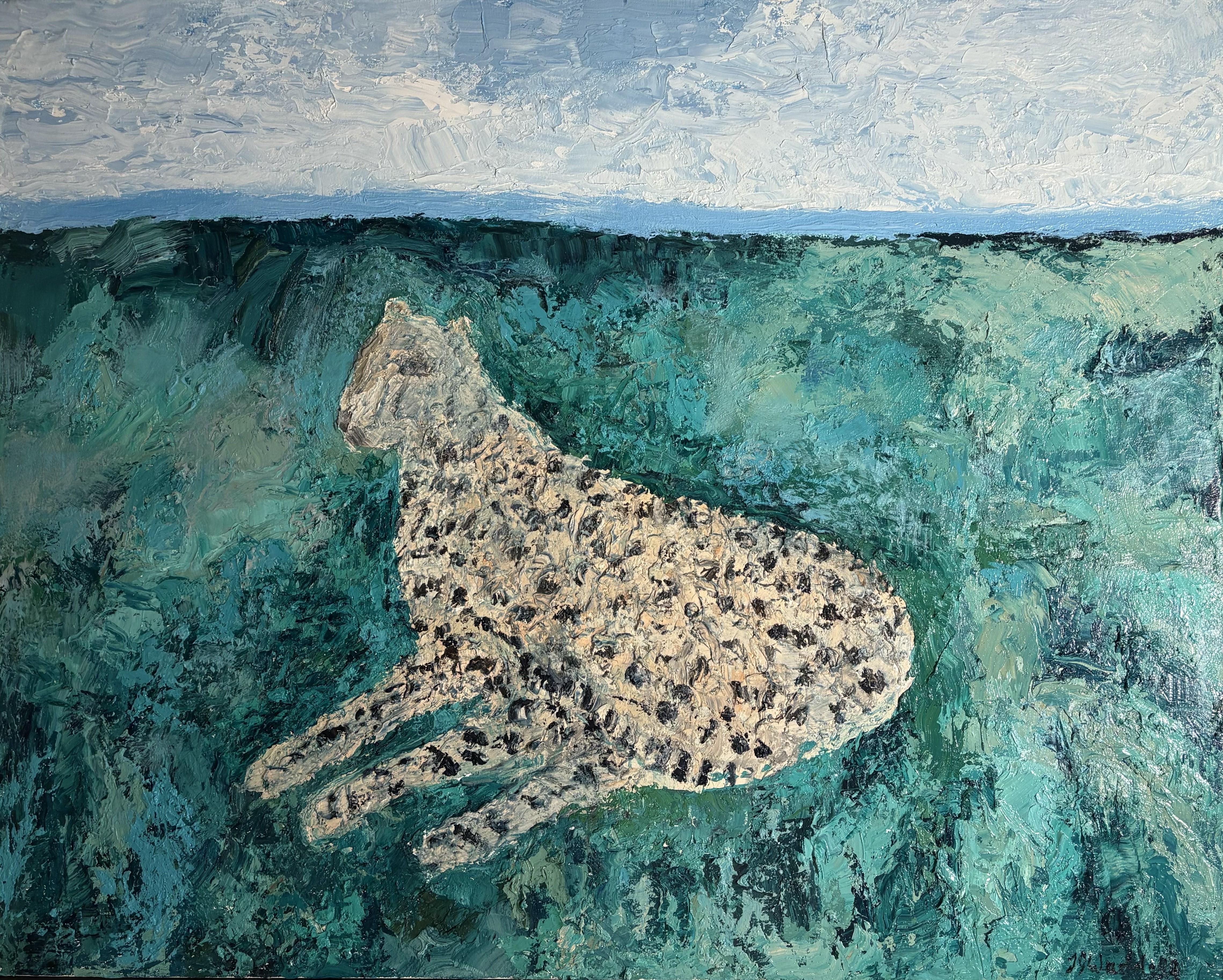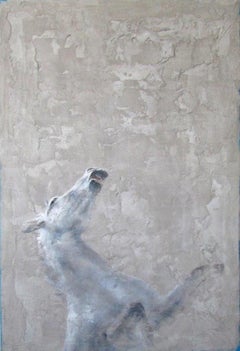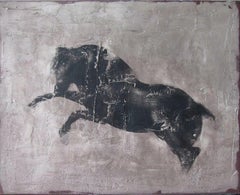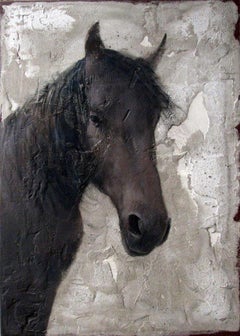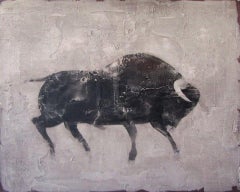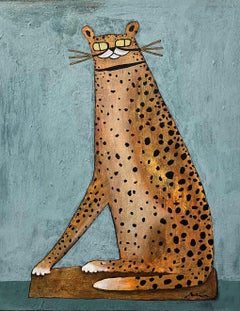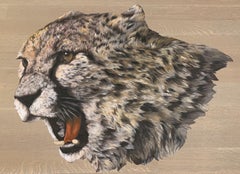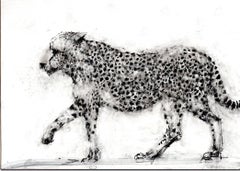Items Similar to 'Cheetah' Dutch Contemporary Fresco Painting of a Cheetah, Brown, Beige, Red
Video Loading
Want more images or videos?
Request additional images or videos from the seller
1 of 14
Jan Grotenbreg'Cheetah' Dutch Contemporary Fresco Painting of a Cheetah, Brown, Beige, Red2021
2021
$10,500
£7,890.38
€9,151.05
CA$14,740.44
A$16,356.71
CHF 8,627.76
MX$199,680.45
NOK 109,158.06
SEK 102,235.35
DKK 68,292.57
About the Item
The pronounced technique is the first thing that strikes you when viewing the works of Jan Grotenbreg (1946). It is innovative and unique. The result of his idiosyncratic working method can be compared to Roman and Medieval murals, the so-called fresco in which people paint directly in wet lime.
At the time, fresco technique was a decorative art form in Europe. However, it is not the decorative element that inspires and interests Jan, but the weathered appearance of the surviving fresco paintings. That is what he wanted to see in his own work. In 2000 he started experimenting with cement on linen. This technique is so special, because cement is a building material and does not stick to canvas. After many attempts, Grotenbreg has found a solution to this problem with modern binders.
An impressive series of animal studies followed. Jan Grotenbreg only paints animals he has an affinity with. Animals such as the horse, the cow and the bull, as well as lesser-known animals such as the protected bird of prey, the black-capped vulture, the Egyptian Nile bird Ibis and the endangered house sparrow, have been laid down on linen by Grotenbreg in a layer of gray cement with acrylic paint in black-brown color nuances.
The texture and composition of the applied cement is a very important part of his work. That's what makes it intriguing. The way in which the cement is applied determines the decisiveness of the work even more than the image. The animals, especially the sparrows, sometimes only cover a very small part of the canvas. It is clear that the emphasis is on technology. The charm of Jan Grotenbreg's work lies in the imitation of that weathering. But the animals portrayed also play a role in this and are not exempt from rendered weariness. They give a beautiful antique impression due to their soft, slightly damaged appearance.
Besides the similarities with Roman frescos, Jan Grotenbreg's work is also reminiscent of prehistoric cave paintings, for example the ones in Lascaux. One of the techniques used in prehistoric cave painting was applying pigments by blowing through a tube. This 'spraying' technique seems to be an inspiration for Jan Grotenbreg's 'Bull'. Thematically is 'Bull' also similar to prehistoric cave painting. The bull could be a symbol of great vitality and spirit. The bull's agile posture makes it a powerful depiction of the beautiful animal.
Jan Grotenbreg was born in the city of Alkmaar, the Netherlands and followed his education at the Academy for Visual Arts in Tilburg.
- Creator:Jan Grotenbreg (1946, Dutch)
- Creation Year:2021
- Dimensions:Height: 39.38 in (100 cm)Width: 78.75 in (200 cm)Depth: 0.79 in (2 cm)
- Medium:
- Movement & Style:
- Period:
- Condition:
- Gallery Location:Utrecht, NL
- Reference Number:Seller: ''Cheetah'' 10813-11stDibs: LU1375216525892
About the Seller
5.0
Vetted Professional Seller
Every seller passes strict standards for authenticity and reliability
Established in 1991
1stDibs seller since 2020
105 sales on 1stDibs
- ShippingRetrieving quote...Shipping from: Utrecht, Netherlands
- Return Policy
Authenticity Guarantee
In the unlikely event there’s an issue with an item’s authenticity, contact us within 1 year for a full refund. DetailsMoney-Back Guarantee
If your item is not as described, is damaged in transit, or does not arrive, contact us within 7 days for a full refund. Details24-Hour Cancellation
You have a 24-hour grace period in which to reconsider your purchase, with no questions asked.Vetted Professional Sellers
Our world-class sellers must adhere to strict standards for service and quality, maintaining the integrity of our listings.Price-Match Guarantee
If you find that a seller listed the same item for a lower price elsewhere, we’ll match it.Trusted Global Delivery
Our best-in-class carrier network provides specialized shipping options worldwide, including custom delivery.More From This Seller
View All'Prancing Horse' Dutch Contemporary Fresco Painting with a Horse
Located in Utrecht, NL
The pronounced technique is the first thing that strikes you when viewing the works of Jan Grotenbreg (1946). It is innovative and unique. The result of...
Category
2010s Contemporary Animal Paintings
Materials
Canvas, Acrylic
'Dark Horse' Dutch Contemporary Fresco Painting with a Horse
Located in Utrecht, NL
The pronounced technique is the first thing that strikes you when viewing the works of Jan Grotenbreg (1946). It is innovative and unique. The result of...
Category
2010s Contemporary Animal Paintings
Materials
Canvas, Acrylic
'Brown Beauty' Dutch Contemporary Fresco Painting with a Horse
Located in Utrecht, NL
The pronounced technique is the first thing that strikes you when viewing the works of Jan Grotenbreg (1946). It is innovative and unique. The result of his idiosyncratic working method can be compared to Roman and Medieval murals, the so-called fresco in which people paint directly in wet lime.
At the time, fresco technique was a decorative art form in Europe. However, it is not the decorative element that inspires and interests Jan, but the weathered appearance of the surviving fresco paintings. That is what he wanted to see in his own work. In 2000 he started experimenting with cement on linen. This technique is so special, because cement is a building material and does not stick to canvas. After many attempts, Grotenbreg has found a solution to this problem with modern binders.
An impressive series of animal studies followed. Jan Grotenbreg only paints animals he has an affinity with. Animals such as the horse, the cow and the bull, as well as lesser-known animals such as the protected bird of prey, the black-capped vulture, the Egyptian Nile bird Ibis and the endangered house sparrow, have been laid down on linen by Grotenbreg in a layer of gray cement with acrylic paint in black-brown color nuances.
The texture and composition of the applied cement is a very important part of his work. That's what makes it intriguing. The way in which the cement is applied determines the decisiveness of the work even more than the image. The animals, especially the sparrows, sometimes only cover a very small part of the canvas. It is clear that the emphasis is on technology. The charm of Jan Grotenbreg's work lies in the imitation of that weathering. But the animals portrayed also play a role in this and are not exempt from rendered weariness. They give a beautiful antique impression...
Category
2010s Contemporary Animal Paintings
Materials
Canvas, Acrylic
'Bull' Dutch Contemporary Fresco Painting with a Bull
Located in Utrecht, NL
The pronounced technique is the first thing that strikes you when viewing the works of Jan Grotenbreg (1946). It is innovative and unique. The result of...
Category
2010s Contemporary Animal Paintings
Materials
Canvas, Acrylic
''Bull'' Dutch Contemporary Fresco Painting with a Bull
Located in Utrecht, NL
The pronounced technique is the first thing that strikes you when viewing the works of Jan Grotenbreg (1946). It is innovative and unique. The result of...
Category
2010s Contemporary Animal Paintings
Materials
Canvas, Acrylic
''Bull'' Dutch Contemporary Fresco Painting with a Bull
Located in Utrecht, NL
The pronounced technique is the first thing that strikes you when viewing the works of Jan Grotenbreg (1946). It is innovative and unique. The result of...
Category
2010s Contemporary Animal Paintings
Materials
Canvas, Acrylic
You May Also Like
Running High - Graceful Textured Animal Painting - Abstract Figurative Cheetah
By Kellie Newsome
Located in Los Angeles, CA
Columbus, Georgia (USA) based artist Kellie Newsome specializes in dynamic and abstracted still-life artworks. Her expressive style emphasizes line structure, creating vibrant painti...
Category
2010s Contemporary Figurative Paintings
Materials
Canvas, Mixed Media, Acrylic, Pencil
Ornamental Cheetah III, Original painting, Animal art, Cheetah painting
By Adam Bartlett
Located in Deddington, GB
The piece is part of a series loosely based on figurines I have come across in vintage shops, the figures often being moulded in one with the base, I thought it would be fun to do on...
Category
2010s Contemporary Animal Paintings
Materials
Enamel
Cheetah
By Jazmin Giordano
Located in New York, NY
JAZMÍN GIORDANO
Buenos Aires 1984
Training
2002-2015 National University of Arts of Buenos Aires
2007-2011 Scholarship at Guillermo Roux Foundation, Buenos Aires
2013-2014 Workshop with Ana Gallardo and Pablo Siquier
2011-2012 Scholarship in School of Contemporary Art Projects
Solo Exhibitions
2019 SALTO DE FE (Leap of Faith), Cazadores Foundation, Buenos Aires, Argentina
PRINCESA FOREVER, Mercado de Arte de Córdoba, Argentina
2018 AUTOGESTIÓN DEL CARIÑO (self-management of loving), Recoleta Cultural Center, Buenos Aires
LA FAVORITA (the favourite) Selvanegra Gallery, Buenos Aires, Argentina
CAPTACIÓN-ABDUCCIÓN (captation-abduction), ESSA Gallery, Unquillo, Córdoba
2017 SOLO QUIERO QUE ME QUIERAN (i just want to be loved), Women's Museum, City of Córdoba, Argentina
Residencies and Fellowships
2019 IMAN Program in La Verdi Recidency, CD México
ERROR Residency, Puebla, México
LeoTours short Recidency Program, Corrientes, Argentina
2016 Bicentennial Grant for Creation, National Arts Fund of Argentina
Residence Grant in “Sala_Taller Proyect” EAC (Contemporary Art Space) Montevideo,Uruguay
2015 Marabunta Studio Visit
Awards
2019 73° National Hall of Arts Castagnino-Macro Museum, Rosario, Argentina, Selection
Prize to Exhibition Project PIPA, Buenos Aires, Argentina
ArteBa Foundation acquisition program for Meliá Hotel, Buenos Aires Argentina
2018 45th Tucumán Hall of Arts, Timoteo Navarro Museum, Tucumán, Argentina, Selection
2017 Prize to Exhibition Project, Recoleta Cultural Center, Buenos Aires
106° National Hall, Installations and Media Selection, Buenos Aires, Argentina
2016 Biennial MBA-MAC Bahía Blanca, Buenos Aires, Acquisition Prize
105° National Salon of Visual Arts of Buenos Aires, Mention in Painting
106° National Hall, Installations and Media Selection, Buenos Aires, Argentina
2014 Provincial Hall of Young Paintors, Auditorium of Mar del Plata, Buenos Aires, Argentina
Collective Exhibitions
2020 Open studio, La Verdi Recidency, CD México
2019 UV Studios, Perfuch 4k , Buenos Aires , Argentina
Ruth Benzacar Gallery, Bienalita, Buenos Aires, Argentina
ArteBA art fair, Imperio Serie, Buenos Aires, Argentina
National University of the South, Open all the becomings, Feminisms, identities and activisms, Bahía
Blanca
2018 Cultural Center of Memory Haroldo Conti, (Between) Policies of privacy, Buenos Aires, Argentina
Usina del Arte, Activations around the Guerrilla Girls...
Category
2010s Animal Paintings
Materials
Oil
Cheetah
By Alicia Rothman
Located in New York, NY
Oil on panel
Category
2010s Contemporary Animal Paintings
Materials
Oil, Panel
Cheetah
By Alicia Rothman
Located in New York, NY
"Cheetah"
oil on wood
8 x 10 inches
2023
Category
2010s Contemporary Animal Paintings
Materials
Wood, Oil
Lynn's Cheetah #2
By Theodore Waddell
Located in Bozeman, MT
Waddell's paintings are a combination of rough marks, thick paint, transparent elegant strokes, and, on a few occasions a slow, hard line scratched into the canvas. You can feel the ...
Category
2010s Contemporary Landscape Paintings
Materials
Canvas, Encaustic, Oil
